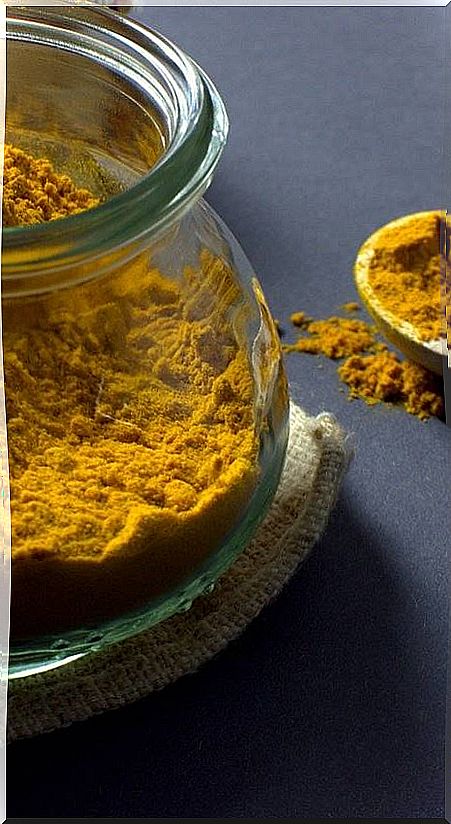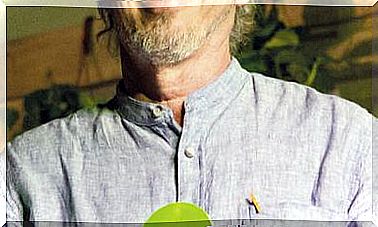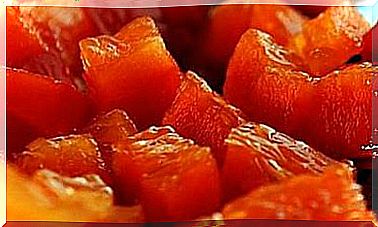Turmeric: Its 4 Main Medical Properties (and How To Take It)
There are many health benefits of turmeric. In the West it is used to reduce inflammation and care for the liver, but in India it is prescribed as a general tonic.

The turmeric, native to Southeast Asia and the main ingredient of curry, is one of the healthiest spices. It has an intense, bitter and somewhat spicy aroma, and a golden yellow color that is given by the curcumoids. These substances, together with curcumin, its main component, explain its remarkable therapeutic qualities.
Turmeric: what it is and what it is for
The Spanish word turmeric comes from the classical Arabic kurkum , which means yellow. In India, depending on the area, it is known as haldi (in Hindi), halud (in Bengal), gauri , haridra or the English name: turmeric . The expression “saffron from India” is also used.
Both Indian turmeric ( Curcuma longa ) and Java turmeric ( Curcuma xanthorrhiza ), less common but with identical culinary and medicinal properties, belong to the ginger family: the cingiberaceae.
In both cases , the rhizome or underground root is used, with an ocher skin and bright, dark orange pulp. This rhizome consists of a thick part and several stubby “fingers” with which the best quality turmeric is produced.
The turmeric plant
They are perennials up to a meter tall that grow best in a hot, humid climate. They have tuberous roots, cylindrical rhizomes and large leaves, elliptical in shape and yellowish-green, with long petioles that start directly from the ground. The flowers, with colors ranging from yellow to garnet, have a long tube and appear protected in a dense spike of bracts.
The entire plant is carefully lifted to prevent any damage, and the “fingers” are cut from the largest rhizomes. Turmeric is boiled or steamed and then left to dry. The outer shell peels off and the rough brown fingers turn orange-yellow and waxy in texture.
In addition to a staple ingredient in curry powder, turmeric is an important seasoning in many oriental dishes. Indian vegetarian cuisine uses it extensively in legume-based recipes. But, apart from its culinary use, turmeric is used as a tonic and as a remedy for liver conditions, while science is interested in analyzing its properties.
Traditional medicinal use
Turmeric is an essential element in the practice of Ayurveda and also in the Siddha system of traditional Indian medicine. It is intended to treat rheumatic pain, to relieve digestive and liver problems, including jaundice, as an antidiarrheal, anti-inflammatory, antibacterial and energy tonic.
Turmeric is traditionally also used to disinfect wounds. With it liniments, creams and oils are still prepared for different dermatological problems, otitis and fungal infections, among other disorders. In Asia it is combined with plants that reinforce or complement its action, such as aloe, neem, Chinese angelica or Chinese sage.
In 1993, two American scientists, but of Indian origin, researchers from the Jackson Medical Center of the University of Mississipi, filed a patent for the use of turmeric on open wounds. It was accepted two years later and assumed that researchers were demonstrating a novel use for turmeric.
When it became known in India, it caused widespread outrage. Up to 32 tests were presented that showed that this use of turmeric was already included in ancient texts and that it was part of traditional practice. After a tough legal battle, the United States Patent Office eventually withdrew the patent, thereby achieving the first documented victory for indigenous peoples’ interests over the power of the pharmaceutical industry.
Proven properties of turmeric
These are the top four properties that turmeric is most frequently recommended today:
- Against inflammation
The root and rhizome of turmeric contain curcumoids and curcumin, coloring matters to which clear antioxidant and anti-inflammatory effects are attributed. They also contain an essential oil with zingiberene, polysaccharides and mineral salts such as iron and potassium.
Curcumin, which is not soluble in water, does have a great ability to dissolve in fats and stimulate bile secretion. Therefore, it contributes to the metabolism of fats and indirectly contributes to reducing cholesterol. Various studies have shown its ability to reduce histamine levels in inflammatory processes.
It acts on the modulation of eicosanoids, such as inflammatory prostaglandins, and can stimulate the activity of two enzymes, glutathione transferase and glutathione peroxidase, responsible for regulating the body’s response to an inflammatory process, which facilitates the elimination of materials from waste.
Its use in this regard is very widespread in India, for the treatment of arthritic and arthritic processes, with the added advantage that it does not generate gastric irritation.
- Protect the liver
But the main virtue of turmeric is its hepatoprotective activity. It is an aid of the first order to alleviate digestive problems, such as dyspepsia, flatulence and diarrhea, especially when they are related to hepatobiliary disorders.
Turmeric increases and thickens the bile, thereby helping to digest fats, reducing liver inflammation, and returning its filtering functions to the liver. It is very useful as a liver repair in non-acute hepatitis and to prevent the formation of gallstones, but by increasing the production of bile, it is recommended to avoid in case of biliary colic, since it could contribute to increasing pain.
Due to its ability to stimulate bile flow, it is also attributed a slight effect on LDL cholesterol. It helps to lower its level of concentration in the blood if it is combined with other cholesterol-lowering plants.
Curcumin, assimilated in the diet, can limit the extension of fatty tissue, inhibiting the growth of new blood vessels or angiogenesis. For this reason it has been recommended in slimming therapies.
- Heart care
According to some authors, turmeric, taken orally, can reduce lipid peroxidation and oxidative damage to cells, thereby increasing the level of protection of the membranes of different organs, not only the liver, but also the spleen, the kidneys or heart, before the appearance of possible pathological processes or cell aging.
In this sense, this spice is revealed as an important ally of the heart, exerting a not inconsiderable action as an antiplatelet agent. This can improve circulation and also be helpful in preventing strokes and arteriosclerosis, and as a support to keep blood pressure levels in check.
- For the skin
By external route, turmeric is again shown as an anti-inflammatory and a moderate antiseptic. It is shown to be very effective in reducing mucosal inflammation in oral inflammations, infected ulcers and wounds, boils, burns and against insect bites.
These indications, based on the traditional use of the plant, are precisely what led the United States to try to patent its topical use, without success.
In traditional Indian practice, turmeric powders are diluted in hot milk and applied in gargles to relieve throat irritation, or a thicker paste is made that is applied in turn on inflamed wounds and open wounds, to promote their cicatrization.
Turmeric extracts are being the subject of different investigations in order to determine the antioxidant and anticancer activity on some types of cancer such as colon, duodenum or skin, but further clinical trials are still required to verify their efficacy on humans.
How to take turmeric
One way to take turmeric would be in powder, diluted in a glass of water or in fruit juice. But turmeric is poorly absorbed when taken outside of meals. And it has been shown that when combined with black pepper – as in so many traditional recipes from the East – it is assimilated up to two thousand times better.
- As a spice in meals
Therefore, it is possible and advisable to benefit from its restorative effects by using it to flavor food, in soups, vegetable creams or integrated in sauces such as curries. If its taste pleases, it can be a real pleasure.
Since curcumin orally is not easily assimilated, it should be eaten in a meal with some percentage of fat content, or associated with unsaturated fatty oils, such as omega-3s.
You will find fresh turmeric in more and more establishments, although you can search especially in Asian and health food stores. You can also find it dry, powdery, with a more yellowish color and a matte texture.
To obtain turmeric powder, the rhizome is boiled or steamed and allowed to dry before grinding. The color of the powder usually indicates the quality of the turmeric – the darker the pigmentation, the better. It is often used as a cheap substitute for saffron or to add extra color and “heat” to mustards.
- In supplement form
On the other hand, if it is not as a condiment, it is preferable to take it on an empty stomach.
In herbalists and some pharmacies it can be purchased in the form of capsules, in some of them associated with a fatty nutrient to better absorb it. Up to 3 or 4 grams a day are recommended.
Turmeric is also sold as a tincture. In that case, the usual daily dose is 0.5 to 1.5 ml a day : 10-15 drops a couple of times a day.
Precautions
Turmeric has few side effects, especially if ingested as a spice. However, experts advise against consuming turmeric in high doses or in prolonged treatments, because some cases of liver damage have been reported.
Since it can stimulate menstrual flow, it is contraindicated during pregnancy and during lactation.
It is also not recommended to take it in case of biliary obstruction or gallstones. On the other hand, as it exerts a discreet anticoagulant action, it is not recommended if treatments with anticoagulants and antiplatelets are being followed , to avoid possible interactions.









